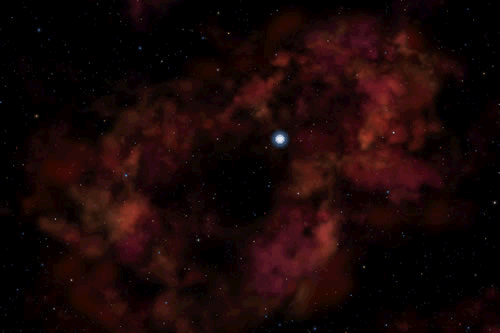Astronomers Blown Away by Historic Stellar Blast

Observations from the Gemini South and other telescopes in Chile played a critical role in understanding light echoes from a stellar eruption which occurred almost 200 years ago. Gemini spectroscopy shows that ejected material from the blast is the fastest ever seen from a star that remained intact.
Imagine traveling to the Moon in just 20 seconds! That’s how fast material from a 170 year old stellar eruption sped away from the unstable, eruptive, and extremely massive star Eta Carinae.
Astronomers conclude that this is the fastest jettisoned gas ever measured from a stellar outburst that didn’t result in the complete annihilation of the star.
The blast, from the most luminous star known in our galaxy, released almost as much energy as a typical supernova explosion that would have left behind a stellar corpse. However, in this case a double-star system remained and played a critical role in the circumstances that led to the colossal blast.
Over the past seven years a team of astronomers led by Nathan Smith, of the University of Arizona, and Armin Rest, of the Space Telescope Science Institute, determined the extent of this extreme stellar blast by observing light echoes from Eta Carinae and its surroundings.
Light echoes occur when the light from bright, short-lived events is reflected off of clouds of dust, which act like distant mirrors redirecting light in our direction. Like an audio echo, the arriving signal of the reflected light has a time delay after the original event due to the finite speed of light. In the case of Eta Carinae, the bright event was a major eruption of the star that expelled a huge amount of mass back in the mid-1800s during what is known as the “Great Eruption.” The delayed signal of these light echoes allowed astronomers to decode the light from the eruption with modern astronomical telescopes and instruments, even though the original eruption was seen from Earth back in the mid-19th century. That was a time before modern tools like the astronomical spectrograph were invented.
“A light echo is the next best thing to time travel,” Smith said. “That’s why light echoes are so beautiful. They give us a chance to unravel the mysteries of a rare stellar eruption that was witnessed 170 years ago, but using our modern telescopes and cameras. We can also compare that information about the event itself with the 170-year old remnant nebula that was ejected. This was a behemoth stellar explosion from a very rare monster star, the likes of which has not happened since in our Milky Way Galaxy.”
